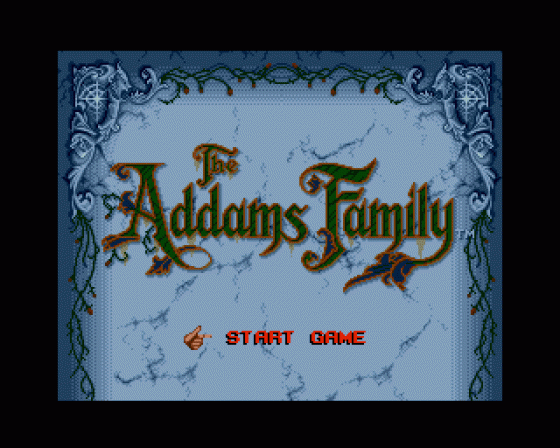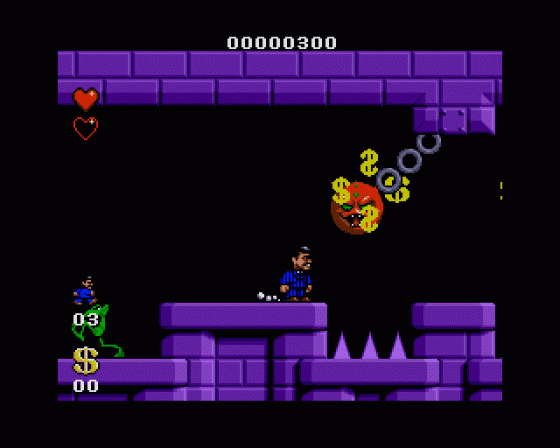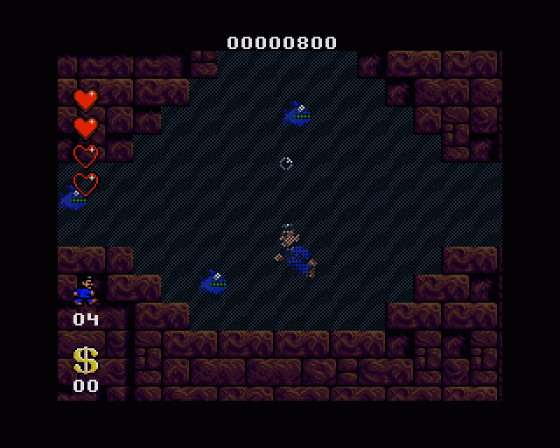
Amiga Power
 1st June 1992
1st June 1992
Categories: Review: Software
Author: Matt Bielby
Publisher: Ocean
Machine: Amiga 500
Published in Amiga Power #14
The best Mario-style game on the Amiga best of the year and most playable film licence ever - true!
The Addams Family
Told you Ocean games were starting to get really good (a couple of months ago in Amiga Power 11, back issue fans!). This is, for my money, the best Ocean release since the budget Amiga version of Head Over Heels last year (yes, better than Parasol Stars), and one of the best 16-bit console-style Amiga releases to date. Of this type of game, only Harlequin gives it a run for its money, really.
So what can we put this down to? Well, the fact that the Amiga Addams Family has been developed in parallel with the very-well-received Super Famicom version, for one, and we all know where the real development time and money is being spent these days - on posh console games for the vast American market. There's been a degree of time and effort put into the actual game design here that we only really get to see six or seven times a year.
There's been one major change since we previewed the game back in Amiga Power 11, and it's been for the better. The parallax scrolling has gone - totally. What we're now left with are plain black backgrounds - they may not look quite as pretty in the screen shots, but the sprites show up better against them, and, crucially, the game scrolls far more smoothly. In fact, I'd challenge you to come up with something that moves better on the Amiga - this is a joy to play, and one big reason is that you're not aware of the limitations of the machine when you play it at all, just your own limitations as a gamesplayer. Loading between levels is kept to a couple of seconds each time too, adding to that console-style feeling of immediate access.
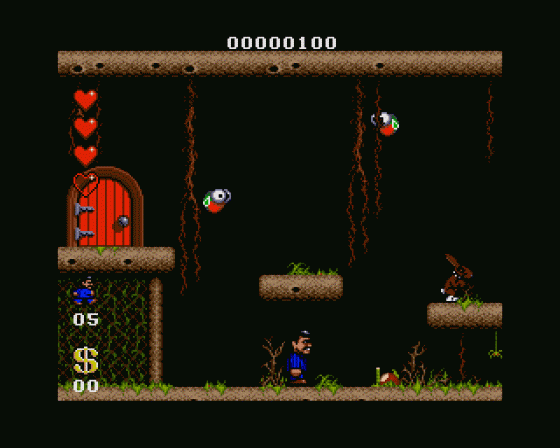
Want something to compare the game to? Well, if Robocod was fast and "Sonic-like", Addams Family has more than a touch of Super Mario Bros. 3 to it, particularly in... well, lots of it, actually. If you're familiar with that game you'll see what I mean immediately, just by looking at the pictures on this page.
The plot is simple, and has (mercifully) very little to do with the largely story-free Addams movie. Various members of the family have been stolen away by an assortment of evil forces and hidden around the house. It's family head Gomez's job - as the one surviving member - to trot around rescuing them all, though that's going to take some doing. Not only are the four people to be rescued initially (Pugley, Granny, Wednesday and Fester), each guarded by an end-of-level Boss character, there are a handful of other Boss characters littered around to halt your progress too (killing these provides an extra life), not to mention literally hundreds of rooms and sub-levels to make your way through.
Only when all four have been rescued do you get to open a wall blocking off half the music room to reveal - loads more levels (as many as you've been through in the first half of the game, according to some sources at Ocean, though we find that pretty hard to believe), somewhere at the end of which you'll find your beloved Morticia. There's no getting away from it - this is one big game, alright.

It's also a bloody tricky one - though not in any unfair sort of way (there's no hidden danger to be found here, Stuart and others of a similar disposition will be pleased to learn). Bags of restarts (and even more secret rooms, packed to the rafters with extra money, power-ups and lives) give you more than a fighting chance, while assorted codes mean that (unless you want to) you don't have to replay bits you've already done each new time you come back to play.
The game is also packed to the brim with nasties and landscape obstacles to evade - there's not a wasted screen in the entire thing - and for once they're nicely integrated too. You don't get the sense that the game designers are just throwing baddies at you for the sake of it here - the jumping and landscape-evading is at least as important a part of the gameplay as the baddie killing (oh yes, and the baddies all die on the first hit too. This isn't one of those hopeless platformers that half thinks it's a beat-'em-up, a la Magic Pockets). There's nothing much wrong with the way the game's paced or presented at all, quite frankly - and how many Amiga platform games can you say that about?
The other thing we always seem to be criticising Amiga platformers for is a lack of imagination. Not this one though. Yes, we've seen a lot of these gameplay elements before (the big bullets you can jump on, the buttons to press to move walls or create platforms, the moving platforms, the guillotines, swinging maces and all the rest) but significantly not in Amiga games very often, much more likely in PC Engine, Mega Drive or coin-op ones. And besides, rarely are they combined any better than this.
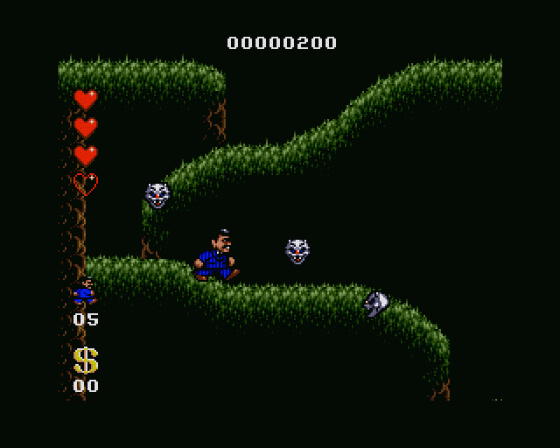
Faults? Well, there are a few - what game doesn't have at least a few, and they're certainly worth talking about, in the interest of balance if nothing else. The first is that the backgrounds are a bit empty now, and that the game looks somehow slightly unfinished without them. This is true, alright - you can't deny it - but equally you can't deny that (a) the lack of backdrops doesn't affect the gameplay at all (in fact, it's the principal reason the scrolling is so smooth), and (b) at least there's no danger of you getting fatally distracted from the main action by something clever going on in the background anymore.
Another criticism I've heard is that some of the sub-levels do seem to go on a bit, with umpteen variations on the same theme repeated in slight variation, rather than anything new happening. This is called depth or value-for-money, I guess - you're simply getting a lot of game here.
Some may find the control inertia slightly uncomfortable too, I suppose - though, to be fair, everyone in this office (Mark being the only exception) seems to think it works just fine. I certainly had no problems with it - it's nothing like as unfriendly as the inertia in Hudson Hawk, say - but I know Mark found it a bit 'forced', claiming that for him, the way the Gomez character slides to a halt sometimes seems to have little to do with how fast he was going. I have to say I don't see it myself.
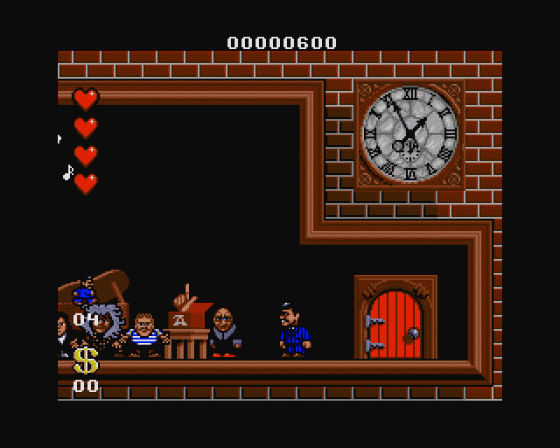
No, for me maybe the biggest fault with the game - and it's not so much a fault with what's there, really, as an absence of something good - is that there's little here that'll really knock your socks off. There are no great surprises, no really impressive giant sprites (well, not that I've seen) - the pacing is more or less uniform throughout. The Mario games are like this too, you might say (and, indeed, you'd have a point), but the fact remains. This is without doubt a great game, but it's more of a Nissan 300ZX than a vintage Ferrari - just as fast, much more sensible and efficient and user-friendly, but lacking a degree of soul.
Now go away and forget the last few paragraphs - the slightly whinging ones - because they make no difference at all to my buying recommendation. Quite simply: go out and get this game. What more can I say? That you'll regret it if you don't...?
The Bottom Line
Uppers: One of the - if not the - most together console-style games on the Amiga yet. There's bags of it, it's mostly very well thought out, it's been put together with great car throughout, and technically it's hard to fault. If you're a secret rooms/hidden extras freak, you'll be in hog heaven.
Downers: Perhaps a tad soul-less. There's a little to really knock your socks off here, just a great deal that's quietly very pleasing indeed.
This is Ocean's best stab at a film licence to date, and one of their best 16-bit games of any type - they've learned to ignore much of the plot (not that this particular film had much of one to start with anyway) and concentrate on the characters and atmosphere instead. A great game...
Other Reviews Of The Addams Family For The Amiga 500
The Addams Family (Ocean)
A review


